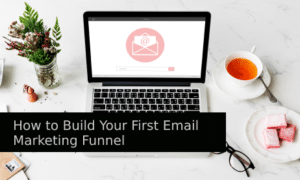Email marketing is a valuable addition to any digital toolbox. Through emails, brands can generate and nurture leads, boost brand awareness, and increase sales.
But how do you know when an email marketing campaign is successful? Of course, there are metrics like unsubscribe, click-through, and conversion rates. For managers and shareholders, however, you need an indicator of how each campaign is performing financially.
You want to know that your emails are bringing in more money than they cost to send. Otherwise, what’s the point? Without tracking return on investment, it’s difficult to know that you aren’t wasting money on ineffective marketing efforts.
How do you make sure your return on investment is high enough? The first step to improving on any metric is tracking. This article explores what ROI is and why it matters. Only when you start paying attention to ROI can you unlock your email marketing campaigns’ fullest potential.
What is email marketing ROI?
ROI stands for return on investment. In simple terms, it’s a measure of money in vs money out. In the context of email marketing, ROI means the profit you’re left with after covering the cost of a particular email campaign.
Whether you’re using email marketing for outbound sales lead generation, product launches, newsletters, or nurturing existing leads, you need data to qualify whether your efforts are yielding the expected results.
This is where ROI comes in. Return on investment is a useful metric for tracking the success of various campaigns, making necessary adjustments, and allocating resources accordingly. But many brands aren’t adequately tracking such a powerful KPI.
How to calculate email marketing ROI
Now, let’s take a look at the steps that are required to calculate your email marketing ROI.
Add up the money spent
To work out the amount of money spent on a marketing campaign, you need to factor in the cost of your email service provider, the salaries or hourly rates of the marketing team, and the expenses of any tools involved in the campaign.
Work out money gained
Determining how much money a campaign has made is trickier.
Email marketing is done for so many different reasons, from lead generation via cold emails to a variety of value-adding content sent to existing customers. When a recipient clicks on the CTA, they might not be directly spending money, but they’re moving through important stages of the sales funnel, which will ultimately lead to conversion.
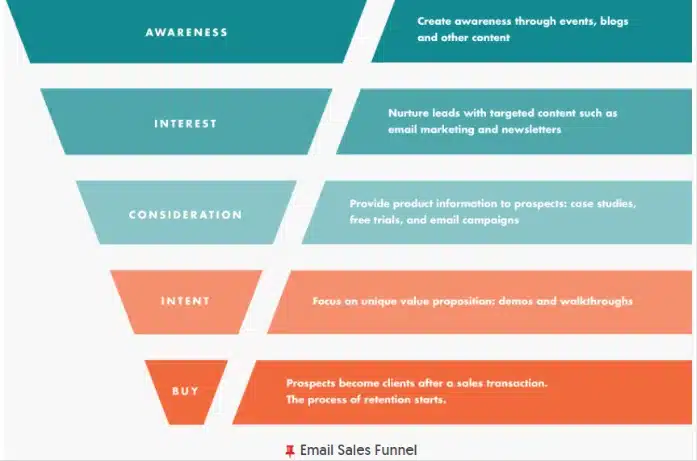
Screenshot taken from moosend.com
So, email marketing may be indirectly adding value to your business in more ways than you realize.
It’s up to you to decide how to measure the amount of money that has been gained. You may choose to track key metrics like conversion rate, click-through rate, list-growth rate, forward/share rate, bounce rate, and unsubscribe rate.
These will give you an idea of whether your email content is resonating with your audience, building brand awareness, and encouraging future sales.
Follow the formula
Once you have your figures for total revenue and cost, the formula to calculate the ROI of email marketing is simple.
Subtract the amount of money spent from the amount gained. Then divide this number by the money spent. Multiply by 100 to get ROI as a percentage.
Analyze ROI
Now, you have your ROI, but what does it mean? What is a “good” email marketing ROI? Depending on where you look, you’ll find answers ranging from 7% all the way up to 30%.
The truth is that there are no easy answers. It really depends on your individual business and the aims of a particular campaign.
So, why bother measuring the ROI of an email campaign? Let’s look at why ROI matters and how you can use it to your advantage.
Why is it necessary to measure your email marketing ROI?
If there’s no specific value to aim for, why do you need to measure ROI? Well, the answer is that email marketing has a higher ROI than other marketing channels, so it’s worth making sure that you’re getting it right.
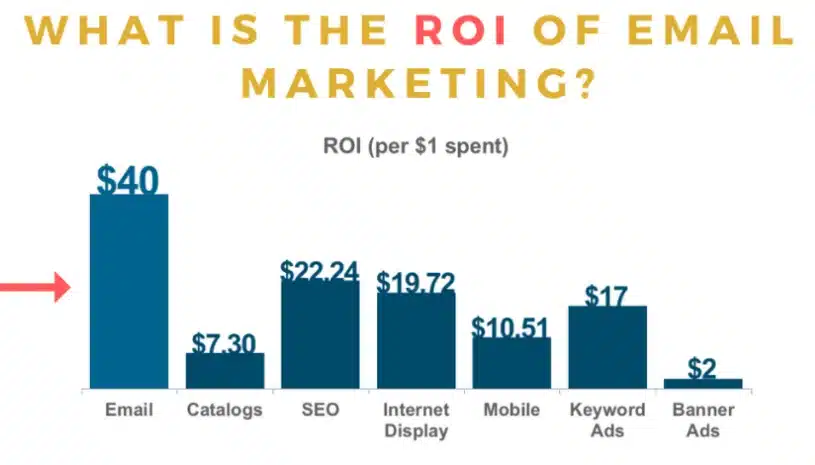
Screenshot taken from mavenmarketinglab.co
Let’s explore four key ways that measuring your email marketing ROI can benefit your current and future marketing campaigns.
- Helps gauge profitability
Measuring ROI is an important first step to assessing the cost-effectiveness of a campaign. This removes the guesswork from the equation, giving you definitive answers on how each campaign is performing financially. From here, you can make informed decisions about how current marketing efforts fit into your wider financial or business plans.
- Enables smart adjustments
You may have a vague idea of which email marketing campaigns seem to be performing better than others. If you’re not tracking metrics properly, however, you’ll not know exactly why this is happening. By investigating ROI and implementing A/B testing, marketers can pin down which aspects of a campaign drive its success (or lack thereof).
With this data, you can make informed decisions about content, timing, or targeting—maybe even experimenting with geotargeting to adjust aspects of the campaign for different regions.
- Optimizes resource allocation
You don’t want to pour time, money, and staff power into emails that sit unread in recipients’ spam folders. A low ROI may indicate a low email deliverability rate—a sign that something needs to change!
Rather than wasting efforts on less effective email marketing campaigns, you can allocate resources toward strategies proven to yield a better ROI.
- Provides tangible results for stakeholders
You want to foster transparency and trust with shareholders. To do this, you need data to back up your claims and illustrate your successes. Sharing metrics, such as ROI, is a great way to demonstrate how your email marketing efforts make a difference toward business goals, thereby increasing trust and support for future endeavors.
How to improve email marketing ROI
Once you know how your various marketing efforts are performing, what’s next? What can you do to increase ROI for underperforming campaigns? Here are some simple ways to improve your email marketing campaigns.
Build an email list continuously
Your email list is perhaps your most invaluable tool, so keep it up-to-date. It’s crucial that your content is being sent to the right people. These are people who are likely to take action and ultimately make a purchase.
Implementing sign-up forms on your website is one way to find future subscribers. Alternatively, you can use incentives, like discount codes, to encourage potential customers to join the email list. Don’t forget the power of social media in finding your people.
Personalize and target emails
What works for one customer may not work for another. So, be sure to send personalized emails for maximum relevance. It may be useful to segment your email list based on demographics, preferences, and user behavior. Then you can be sure to send your email subscribers the type of content that they’re most likely to respond to.
It’s better to spend more money on more personalized content than to waste money on a campaign that a large percentage of recipients will not open.
Clean your email list regularly
Having a long list of subscribers isn’t the main goal—it’s more important that the contacts on the list are high-value.
For this reason, it’s best to regularly remove inactive accounts. High bounce rates or low open rates will only harm your email ROI.
Additionally, you should make sure that contact information is up to date so that targeting efforts are accurate.
It may be worth making an effort to re-engage inactive email users before removing them—perhaps by offering incentives to shop with you again.
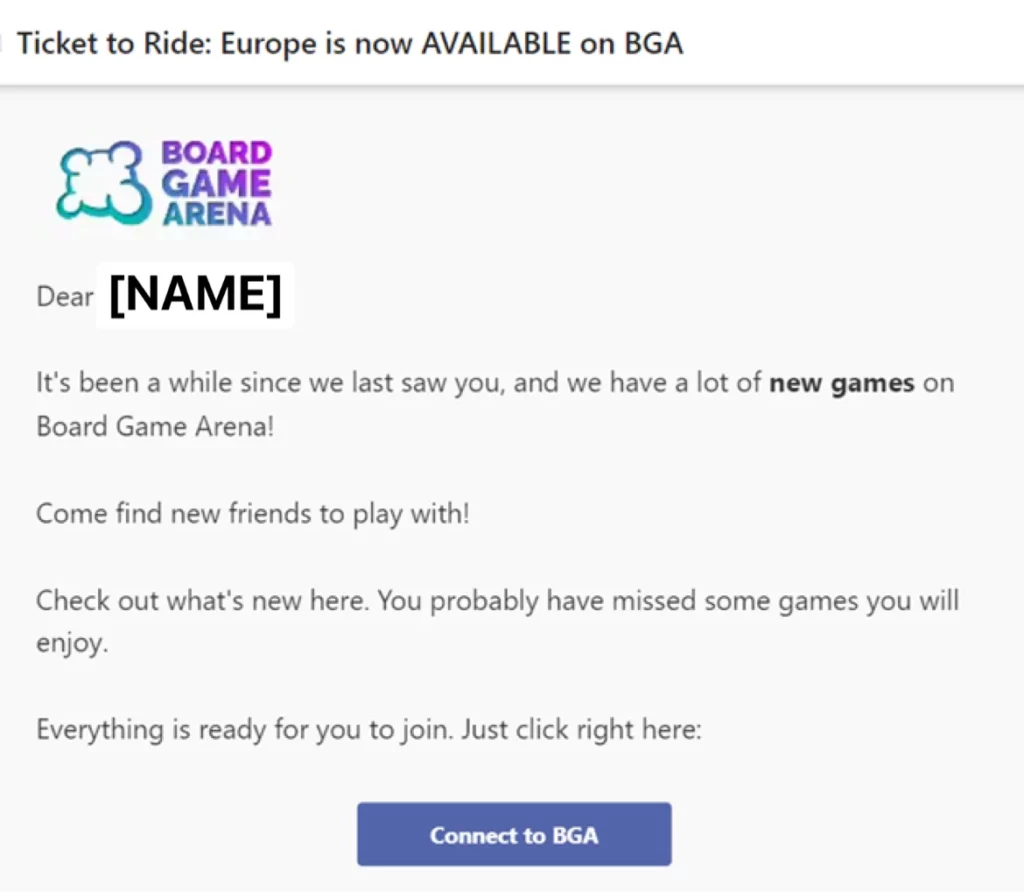
Screenshot taken from a promotional email from boardgamearena.com
Write effective subject lines and email preheaders
Copywriting techniques make all the difference when it comes to email communications and marketing. The perfect combination of words can grab the recipient’s attention, compelling them to open an email they may otherwise have ignored.
From here, all of your copy should be well-crafted to ensure that the customer keeps reading, hopefully continuing on their journey by clicking the CTA.
Experiment with your email CTAs
Email CTAs will be things like “Shop Now!”, “Explore the Collection,” or “Learn More Here.”
Different call-to-action buttons may resonate with your audience—you need to experiment and track success to find out what works. Maybe the color, placement, or font need adjusting. Maybe the words themselves could be more interesting.
Finding what works for your business and your buyers will increase open rates and move users closer to making a purchase.
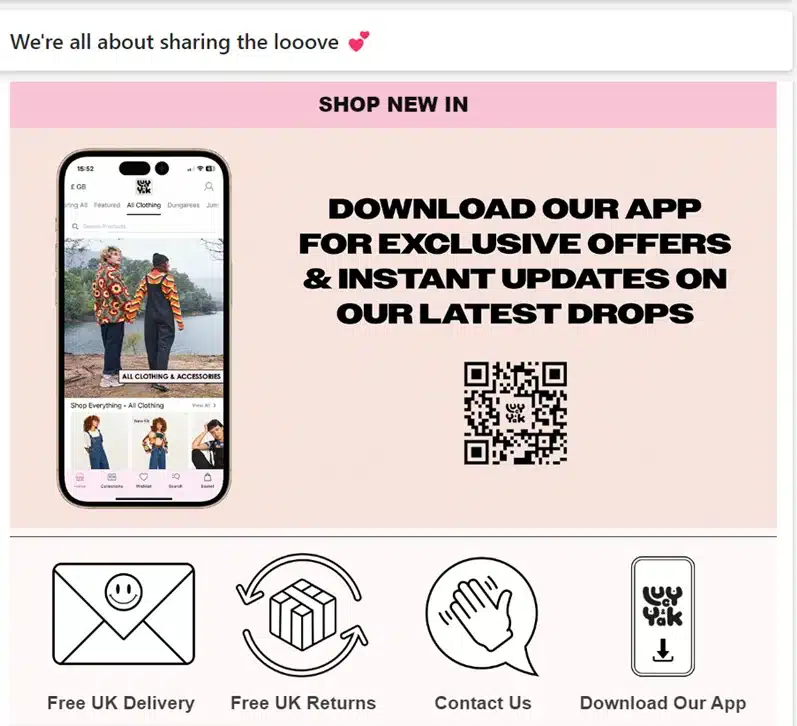
Screenshot taken from a promotional email from lucyandyak.com
Send browse and product abandonment emails
Sometimes, users need an extra push to make a purchase. For example, imagine someone has already engaged in some way. Say they’ve visited the website, perhaps even adding some items to their cart, but they haven’t gone all the way and finished the transaction.
Email is the perfect tool in this situation. A quick personalized follow-up reminds the customer why they were interested—even better if the email contains an added discount code or incentive!
Do A/B testing
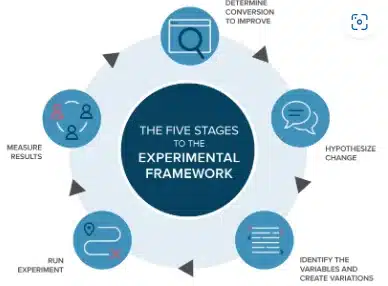
Screenshot taken from optimizely.com
With A/B testing, you can change various aspects of your email campaigns and see how that influences email ROI and other key performance indicators.
So, a company specializing in AI-powered solutions might A/B test subject lines to promote their conversational AI call center. Keeping all other aspects of the email the same, they could send out one version with a human-generated copy and one with an email subject line created by AI.
Testing like this helps isolate one aspect of a campaign at a time and determine what works best.
Final thoughts
It’s absolutely necessary to measure ROI if you want your email marketing to be as successful as possible. By measuring the return on investment you get from each campaign, you can figure out what resonates with your target audience and gets them to engage. Then you can make smarter marketing decisions, making sure that every dollar you spend on emails is bringing in many more dollars for the company.

